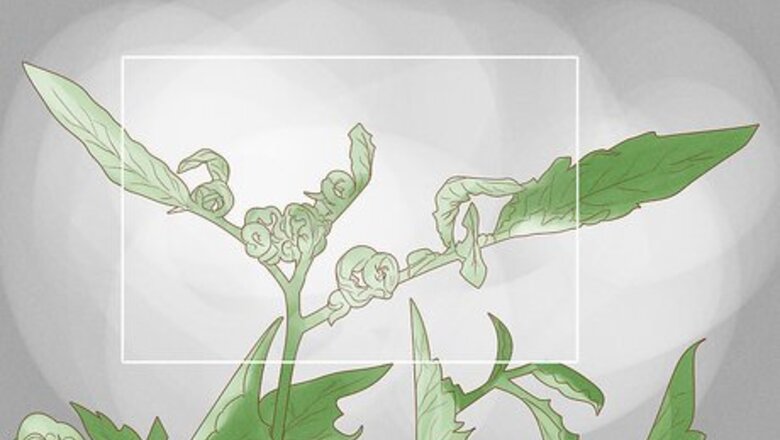
views
Controlling the Spread
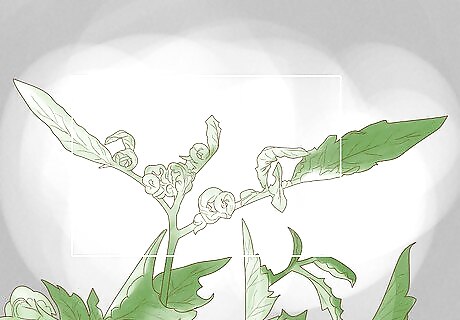
Look for curling, thickened, leathery leaves on the tomato plants. Identify curly top virus on your tomatoes by checking for symptoms of infected plant leaves. Contaminated leaves may look dwarfed, crinkled, rolled inward, or cupped upward. Look for a thick, almost leathery texture on the leaves as well. In some varieties of the virus, the veins on the underside of leaves may turn purple. Young and small tomato plants may turn yellow.

Remove any infected plants as soon as they show symptoms. Grasp the plant at the base of the stem and pull it straight out of the ground. Discard the plant in the garbage so the virus still can’t potentially spread to other plants. Because the curly top virus is transmitted by leafhoppers, it can’t spread just by coming into contact with your other plants. However, the leafhoppers can still spread the virus if they eat the leaves of the infected plant.
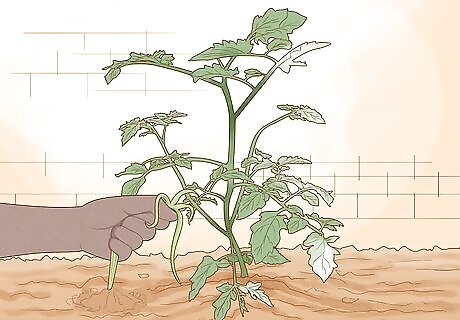
Pull up any weeds growing around the infected plants. Weeds in the area around your garden can carry the virus and will show similar signs of infection. Remove the weeds by pulling them straight out of the ground to keep the virus from spreading to your tomato plants. The best way to help stop the spread of the curly top virus is to remove the infected plants and weeds.
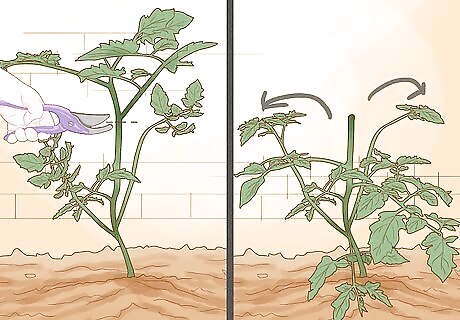
Cut back the top to encourage side growth to try to save the plant. If you want to try to save your tomato plant, use pruning shears, gardening scissors, or a sharp knife to cut back the plant. Focus on removing the top and center to encourage side branches to grow and extend to give it a better chance at survival. Most tomato plants infected with curly top virus will likely die, but there’s a small chance that the plant will survive and bear fruit. Infected plants usually produce fruit that ripens prematurely or looks dull and wrinkled, though. Keep in mind that leaving the plant in your garden can cause the virus to spread if you have leafhoppers.
Preventing Curly Top Virus
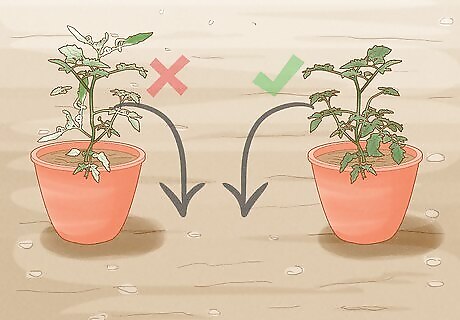
Select virus-free tomato transplants. Inspect any tomato transplants you plan to grow in your garden. Look for the characteristic curled, leathery leaves that indicate that it may have curly top virus. Choose healthy transplants to avoid introducing the virus to your garden and potentially infecting other plants. Since the virus is spread by leafhoppers, it’s possible that you’ll see healthy and infected transplants right next to each other when you purchase them. But that doesn’t mean the healthy plants have been contaminated. If you’re unsure if a transplant has the virus, better to err on the side of caution and avoid choosing it.
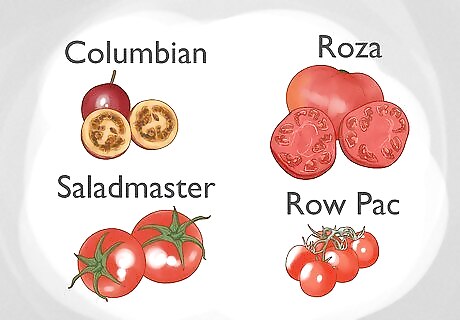
Choose a resistant tomato variety to minimize the risk of the virus. There are 4 tomato cultivars that are more resistant to the curly top virus: Columbian, Roza, Salad Master, and Row Pac. Look for one of these varieties whenever you’re selecting tomato plants for your garden to help reduce the chance that they’ll contract the virus. Resistant varieties may not be completely immune to the virus but may be able to tolerate it better. Check out your local nursery or look online to see if you can find virus-resistant cultivars you can plant.
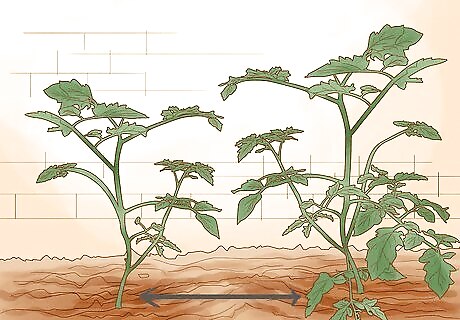
Plant your tomatoes close together to prevent curly top. Space your transplants closely together whenever you plant them in the ground to encourage dense plant growth. Dense plant spacing can help prevent the curly top virus. Dense plant spacing is called “double planting.” Double planting may result in smaller and fewer tomatoes, but you’ll have a better chance of preventing curly top virus.
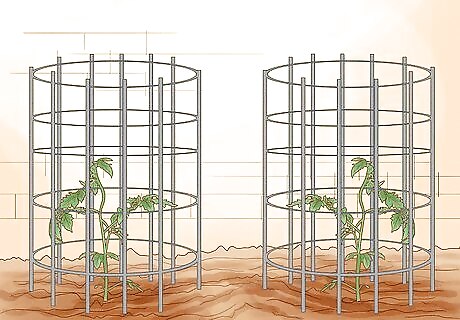
Place netted cages over young tomato plants to keep leafhoppers away. Netted cages, also known as tomato cages, help protect immature plants after they’re planted. Choose netted cages with smaller holes to help prevent leafhoppers from getting in and cover your young tomato plants to keep them safe from the virus. When the plants are mature, remove the netted cages. The netted cages can provide some shade as well, which can help deter leafhoppers from getting onto your young plants.
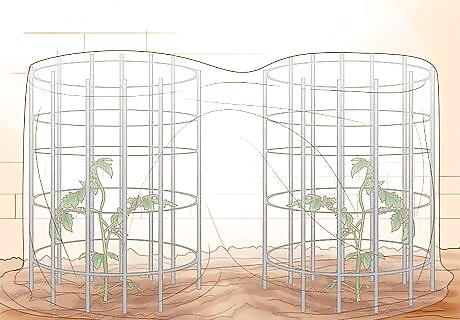
Cover your tomato plants with shade cloth. Shade cloth is usually made out of loosely woven polyester material and is designed to partially block the sun and provide shade to your plants. Hang the cloth over your mature tomato plants so they’re shaded, which can help keep leafhoppers from getting onto them and infecting them with the virus. Leafhoppers prefer to eat in sunny locations, so shade can be an effective way to deter them from your plants. Shade cloth is also designed to be permeable so water can go through them.

Spray insecticide once a week to keep out the virus. Because the curly top virus is spread by leafhoppers, controlling the pests in your garden can be an effective way to prevent it from infecting your tomato plants. Apply an insecticide to your garden weekly to control your leafhopper population. Make your own natural insecticide for a more environmentally-friendly option. Spraying insecticides onto your tomato plants to get rid of leafhoppers isn’t an effective strategy because leafhoppers usually just land, eat, and then move on. However, regularly applying insecticide to the area can reduce the number of leafhoppers that could potentially land on your plants.




















Comments
0 comment